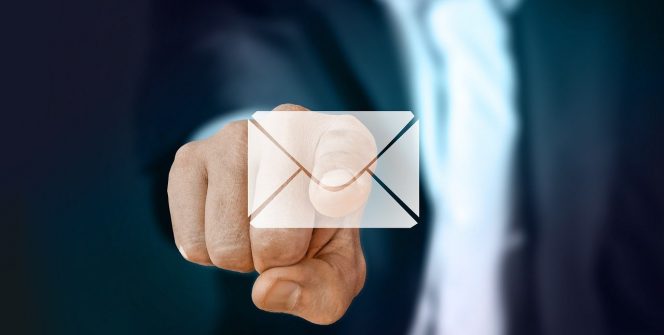Are you getting the much-hailed 4400% ROI from email marketing? Whether your answer is a yes or a no, I have a trick up my sleeve as a Salesforce Marketing Cloud email specialist with broad experience. Personalization and segmentation are probably the most discussed email marketing tactics since its archaic days, but in 2021, we need to level up. Today, I will share insider tips on micro-segmentation and hyper-personalization who could play Batman and Robin for your Gothic email marketing workload. Follow this article to see how you can employ the duo to get the best results with making any (manual) efforts!
What Is Micro-Segmentation In Emails
Microsegmentation is segregating your subscribers into smaller fragments identified by their inclinations and online behaviour. Technically, a micro-segment is considered a tiny, defined subscriber base that is selected for the purpose of sending your customers with highly relevant and personalized marketing emails. Simply put, micro-segmentation is an advancement to standard segmentation to give it an edge over the general disparities in user behaviour and their motivations.
Micro-segmentation nowadays is considered a key feature in email marketing because it has been noticed that companies who implemented micro-segmentation marketing based on audience-specific information and tailored their messaging accordingly got higher open rates, lower unsubscribe rates. They are also known to make more money from their email marketing efforts.
What Is Hyper-Personalization In Emails
Hyper-personalization in emails includes all the data you collected about a customer with their knowledge on various platforms. If you record the customer’s purchase history online and offline, track online behavior, track stores visited offline, then you can hyper-personalize your emails. The goal is to improve the experience of customers and maximize the chances of converting them on an offer.
Hyper-personalized emails are attractive to subscribers due to their benefits like it gets easy for the subscriber to find what they are looking for when their journey map is simple and coordinated. It aims at keeping customer experience at the center stage during every process ranging from lead nurturing to increasing lifetime value of subscribers.
Instead of serving subscribers an overwhelming range of options, hyper-personalized emails only offer the most relevant recommendations for them based on their purchase history or personal preferences. Hyper-personalization in your emails also makes your message stand out since you can tailor its content, appearance, and other parameters to what your subscriber would like to receive in their inboxes.
How To Combine Micro-Segmentation And Hyper-Personalization For Email Campaigns
Micro-segmentation and hyper-personalization are often used interchangeably since both attempt to customize an individual’s experience with a brand. But while micro-segmentation involves grouping subscribers into smaller buckets in order to extract certain similarities, hyper-personalization is all about the individual. The messages aren’t created for a particular subscriber base but focused at reader intent instead.
Using micro-segmentation, a brand divides its subscriber database by using data analytics based on attributes like lifecycle, interests, attitudes, purchase behavior, search history, buyer stage, and much more. Marketers then design experiences that are more relevant to subscribers in each micro-segment. With hyper-personalization, advanced analytics can go beyond even micro-segments to create individual customer data hubs that integrate every interaction so that the content of a promotional message would be tailored to the individual subscriber’s unique profile and would be specifically relevant to them.
While micro-segmentation creates customer groups based on shared likes, dislikes, and activities, hyper-personalization drills down to minute differences, which can be used to target subscribers at the individual level. Traditionally, organizations have used customer segmentation as part of their marketing strategy in an attempt to ensure customers receive relevant communications and offers but struggle to achieve deeper levels of personalization through this tried-and-tested method.
AI-powered hyper-personalization delivers optimal results by allowing companies to tailor their marketing efforts at the individual level by using data gathered on that specific customer. Fine tuning product recommendations and user-specific discounts using the 360-degree customer personas is possible only when you implement this approach in a calibrated manner using an advanced, closely knit tool stack. Implementing this strategy increases customer satisfaction and drives brand loyalty, willingness to spend, and overall marketing effectiveness.
Things To Keep In Mind Before Implementing The Combination Of Micro-Segmentation And Hyper-Personalization For Emails
While most brands have already adopted these marketing techniques, the reality is that personalization at scale is a huge challenge, especially for businesses that cater to large volumes of subscribers. Some of the things to ponder include data consolidation, as marketers would be able to simply pull up a unified customer profile, one that compiled data from every conceivable touchpoint and is certain that the profile would be an absolutely up-to-the moment.
Building digital trust remains a critical barrier to enabling personalized experiences with the EU General Data Protection Regulation guidelines on harvesting personal data posing a new set of challenges. These developments mean the future of personalization will be based on trust, and for that, businesses have to take initiatives for convincing their customers with greater transparency.
There’s a fine line between convenient and creepy especially when it comes to email marketing. As technologies such as artificial intelligence are becoming more sophisticated, subscribers are beginning to experience a level of, let’s say intimacy, with brands that they’re still getting used to. While both the techniques, micro-segmentation and hyper-personalization, work well in some areas like recommendation engines, in other channels, it can feel downright shady if not done in the right way.
Summing Up
Throughout the article, you might have noticed that both of them act as complementary to each other. Micro-segmentation is about finding the right subscribers for a given message, and hyper-personalization is a powerful way to make those emails meaningful. As a Salesforce Marketing Cloud consultant, I find that your success lies in how well you can harvest their synergy. I hope this article adds to your knowledge on the topic and improves your email marketing results in 2021.

Leave a Reply